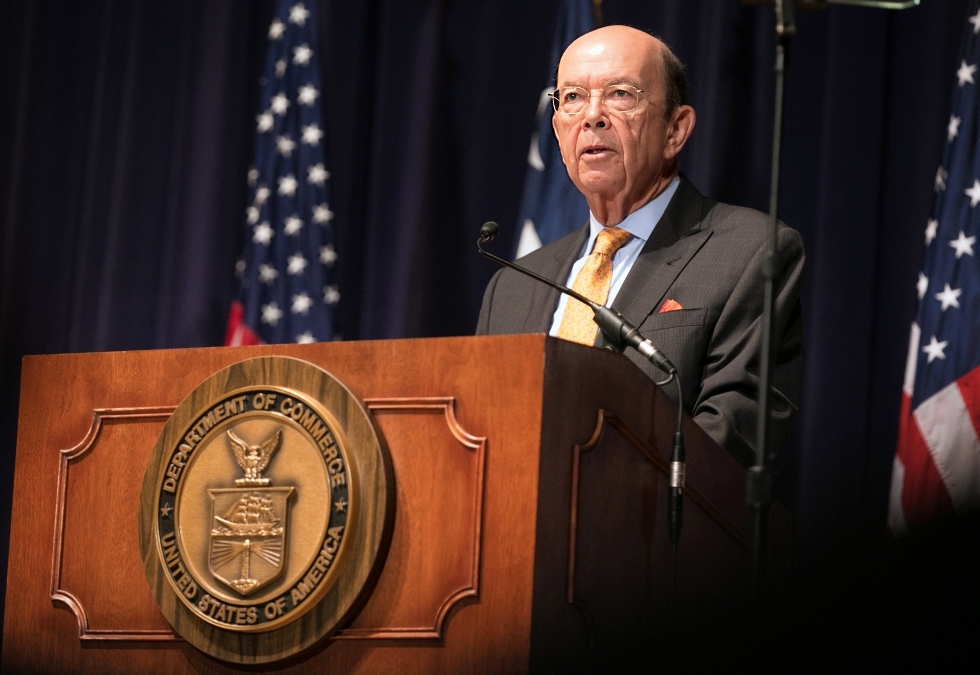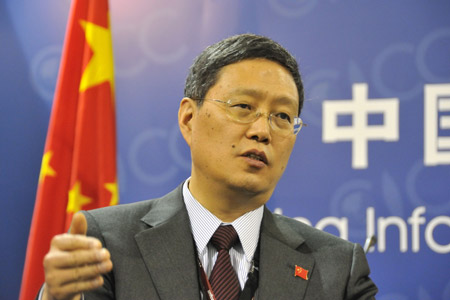
 Beijing, Washington Reach First Trade Deal Under 100-day Plan
Beijing, Washington Reach First Trade Deal Under 100-day PlanBy July 16, the 100th day after the presidents' first meeting, both countries will take concrete steps to alter and increase trade. US Commerce Secretary Wilbur Ross hailed the deal, telling reporters, "This is more than has been done in the whole history of US-China relations on trade." Chinese Vice Finance Minister Zhu Guangyao reciprocated the positive message stating, "We believe that Sino-U.S. economic cooperation is the trend of the times... We will continue to move forward," The trade agreements did not address areas such as steel, aluminum or auto parts.
Meanwhile, a critical figure in the bilateral relationship, Qian Qichen, passed away of illness at the age of 89. The former foreign minister, vice premier, and respected diplomat was in charge of carrying out Deng Xiaoping's and Jiang Zemin's pragmatic foreign policies, navigating a series of hot-button issues including the return of Hong Kong and Macau from colonial rule.
 Doubling Down on "One Belt, One Road"
Doubling Down on "One Belt, One Road"China plays hosts to 1,200 guests for an international forum in Beijing May 14-15 featuring its three-year-old "One Belt, One Road" economic growth plan of infrastructure building. Soon after the announcement of a US-China trade deal, the U.S. also announced it would send a delegation led by a top White House adviser to the 'Belt and Road' summit in Beijing.
China-US Focus contributor and former vice foreign minister He Yafei argued in an interview for the U.S. endorsement of and participation in OBOR. Focus contributors Paul Sedille and Vasilis Trigkas comment that it is possible to understand China's BRI as part of a formative "Silk Road system," which is symbiotic to the U.S.-shaped Bretton Woods.
In the meantime, official Chinese media outlets are spinning out OBOR campaign videos and articles, including bedtime stories by China Daily and this Xinhua video (link in Chinese) citing ancient Chinese poems and matching sand painting images.
 China's 10 Most Youthful CitiesShenzhen has clinched the title as the most youthful city in China. Based on a "big data" survey of its users ages 16-35, Tencent, which owns the hugely popular instant-messaging platforms WeChat and QQ, put the country's trailblazing showcase city of reform across Hong Kong on the top with a youthful index far outstripping others. Other cities with higher concentration of younger residents include the resort city of Sanya in Hainan Island and the garden city of Hangzhou. Beijing ranks 20th while Shanghai lost its place on the top 20 list this year. Most cities making the list are so-called second tier cities located in the country's eastern and southern regions.
China's 10 Most Youthful CitiesShenzhen has clinched the title as the most youthful city in China. Based on a "big data" survey of its users ages 16-35, Tencent, which owns the hugely popular instant-messaging platforms WeChat and QQ, put the country's trailblazing showcase city of reform across Hong Kong on the top with a youthful index far outstripping others. Other cities with higher concentration of younger residents include the resort city of Sanya in Hainan Island and the garden city of Hangzhou. Beijing ranks 20th while Shanghai lost its place on the top 20 list this year. Most cities making the list are so-called second tier cities located in the country's eastern and southern regions. On this day in Chinese history...in 2008On May 12, 2008, a magnitude 8 earthquake hit China. The earthquake left 69,000 people dead, nearly all of them in China's Sichuan Province. Additionally, it left 18,000 people missing, and 4.8 million homeless. It was the deadliest earthquake in China since 1976 when the Tangshan earthquake killed over 240,000 people. The earthquake was also felt in nearby countries and as far away as both Beijing and Shanghai, where office buildings swayed with the tremor. Strong aftershocks were felt for months after the initial quake, some of which resulted in additional deaths and damage. In later months, the Chinese central government announced that it would spend 1 trillion RMB (about US $146.5 billion) over three years to rebuild areas affected by the earthquake, as part of the Chinese economic stimulus program.
On this day in Chinese history...in 2008On May 12, 2008, a magnitude 8 earthquake hit China. The earthquake left 69,000 people dead, nearly all of them in China's Sichuan Province. Additionally, it left 18,000 people missing, and 4.8 million homeless. It was the deadliest earthquake in China since 1976 when the Tangshan earthquake killed over 240,000 people. The earthquake was also felt in nearby countries and as far away as both Beijing and Shanghai, where office buildings swayed with the tremor. Strong aftershocks were felt for months after the initial quake, some of which resulted in additional deaths and damage. In later months, the Chinese central government announced that it would spend 1 trillion RMB (about US $146.5 billion) over three years to rebuild areas affected by the earthquake, as part of the Chinese economic stimulus program.
Prepared by China-US Focus editorial teams in Hong Kong and New York, this weekly newsletter offers you snap shots of latest trends and developments emerging from China every week, while adding a dose of historical perspective.
- 2017-05-05 Degree of Autonomy Decaying in Hong Kong?
- 2017-04-28 Aircraft Carriers, Submarines, and Jetliners: Now Made in China
- 2017-04-21 Green Cards & Red Lines
- 2017-04-14 U.S Beef for Chinese Chicken? More Hollywood Films in China?
- 2017-04-07 The Xi-Trump Summit in Florida
- 2017-03-31 Google Makes a Comeback to China?
- 2017-03-24 Xi and Tillerson Trade Phrases
- 2017-03-17 Sec. Tillerson Visits Asia ahead of Xi-Trump Summit
- 2017-03-10 Defending China's Defense Budget
- 2017-03-03 The Korean Peninsula Draws Headlines
- 2017-02-22 CPC Meets to Reaffirm Commitments in Anticipation of "Two Sessions"
